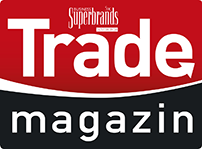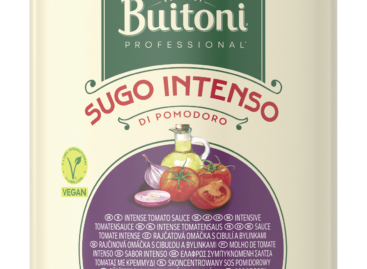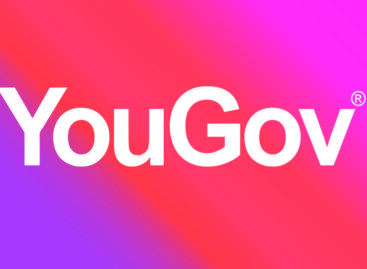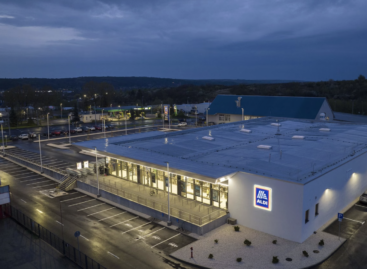Smarter ways to indulge pets
Raw material prices, transportation costs and energy prices, inflation – all of these factors have made pet food production more difficult and generated a significant rise in consumer prices. However, following a few tight years, sales stabilised by the end of 2024 and growth is already visible in most segments this year.
This article is available for reading in Trade magazin 2025/4.

Marta Nagot
Central Europe market
and strategy director
Mars Pet Nutrition
“We see different trends in the cat and dog food segments: cat food – especially the aluminium foil bag variety – is growing much faster. A higher proportion of cat owners purchase wet pet food than dog owners”,
says Marta Nagot, Central Europe market and strategy director of Mars Pet Nutrition.

Réka Katona
senior MDO channel
manager
Nestlé Hungária
“Consumer commitment to our premium and super-premium brands remains strong. However, it is a challenge to reach and convince pet owners who have switched to home-feeding that industrial pet food is the best solution for their pets”,
explains Réka Katona, senior MDO channel manager of Nestlé Hungária Kft.
New innovations – from young pets to seniors
Mars has several innovations in the pipeline this year. Their biggest cat food brand, Whiskas and the Sheba brand are both adding new products. This spring brings the debut of Whiskas DUO, which combines two popular flavours in one recipe for even more variety.
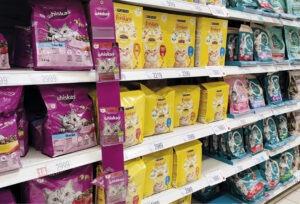
Sales stabilised by the end of last year and growth is already visible in most segments this year
Mars will offer a bigger selection of Whiskas and Sheba aluminium foil bag packaged foods in a variety of sizes, from 12-bag versions to the 120-bag variant.
As the company’s latest research shows that around a quarter of Hungarian dogs are elderly, they will be introducing the Pedigree Senior aluminium foil bag packaged dog food in the spring, which offers a complete and balanced diet for older dogs. In addition to this, Pedigree treats will appear on store shelves in new packaging. Mars dog treats contain up to 5% fat or less than 30 calories.
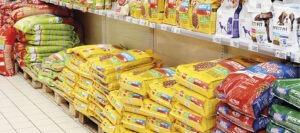
Demand for larger pack sizes has increased, even in the premium segment
Treats for dogs and cats
Nestlé is responding to the growing importance of economising in the premium and even super-premium segments.

Klaudia Hámori-Kamocsár
brand manager
Nestlé Hungária
“In 2025 we are expanding the PURINA portfolio in Hungary with this trend in mind, and we will also try to satisfy this demand with our multipack products: for example, the market leader in super-premium wet cat food, GOURMET, is now available in 12-bag packs”,
says brand manager Klaudia Hámori-Kamocsár.
They are expanding the portfolio of leading wet cat food brand FELIX with the new DELI MOMENTS liquid treats. For dogs the company is introducing the new ADVENTUROS Training treats. //
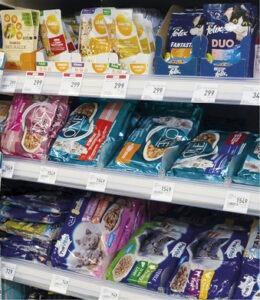
Cat food market, especially that of the the foil bag version, grows much faster
//
Challenges on the pet food market
Prices increased by approximately 30% for dog and cat food alike in 2022 and 2023. While in 2021 51% of Hungarian households bought packaged wet or dry dog food, this proportion fell to 48% in 2024.


Krisztina Bakonyi-Kovács
senior product consultant
GfK Consumer Panel
Although cat food buyers have stuck with the category despite rising prices – 40%-40% of households bought the category in both 2021 and 2024 – changes in buying patterns have been observed over the past three years. Both pet food segments are characterised by a decrease in the frequency of purchases and – although the average amount of pet food purchased per occasion has remained relatively stable over the last few years – this has resulted in an overall reduction in the volume of pet food purchased.
In 2021 the average number of times a household bought cat and dog food was 28 and 21 respectively, this number decreased to 25 and 19 times in 2024. In 2024 Hungarian households purchased 1,654g of cat food and 3,282g of dog food per buying occasion. On the dog food market the shares of the discount supermarket and hypermarket channels have reduced slightly compared to pre-crisis levels, with discounters accounting for 48% of purchases and hypermarkets for 19% in 2021, compared to 46% and 17% respectively in 2024. In the cat food category the role of drugstores has gradually strengthened over the last few years; although the share of the channel is still low (6% in 2024), this represents a 2 percentage point rise compared to 2021. //
//
Related news
Buitoni Condensed Tomato Sauce with Onions
🎧 Hallgasd a cikket: Lejátszás Szünet Folytatás Leállítás Nyelv: Auto…
Read more >Brand Footprint – the celebration of brands
🎧 Hallgasd a cikket: Lejátszás Szünet Folytatás Leállítás Nyelv: Auto…
Read more >We took you on a flight! (Part 2)
🎧 Hallgasd a cikket: Lejátszás Szünet Folytatás Leállítás Nyelv: Auto…
Read more >Related news
How do young adults celebrate?
🎧 Hallgasd a cikket: Lejátszás Szünet Folytatás Leállítás Nyelv: Auto…
Read more >Vajda-Papír celebrates Ooops!’s 15th anniversary with a hybrid AI campaign
🎧 Hallgasd a cikket: Lejátszás Szünet Folytatás Leállítás Nyelv: Auto…
Read more >Pre-holiday shopping at up to half price
🎧 Hallgasd a cikket: Lejátszás Szünet Folytatás Leállítás Nyelv: Auto…
Read more >